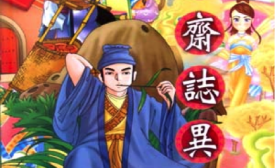Cultural Diplomacy
Authorities in Colombia’s capital Bogota have agreed to not remove graffiti as long as the street art is performed “in a responsible way,” following a meeting with graffiti artists who previously had claimed they were being persecuted.
Screams rang out Saturday night across the Los Angeles Sports Arena as Taiwanese band Mayday brought its brand of Asian stadium rock to an all-Chinese audience for a show celebrating its 15th anniversary.

Frameworks for cultural diplomacy in the U.S. are often too narrow and too broad.
Frameworks for cultural diplomacy in the U.S. are often too narrow and too broad. On the one hand, self-identified practitioners of cultural diplomacy – within and outside government – tend to identify, if somewhat generically, specific exportable forms of expressive culture (think: music, theater, literature, dance, murals, or film).
One significant feature in U.S.-Chinese relations in recent years has been the establishment of Confucius Institutes in many American universities, where faculty from China provide instruction in Chinese language and offer programs on Chinese culture to American audiences. Just as some view China’s increasing global power with trepidation, many also see the spread of these institutes in an ominous light.
The Blue Samurai, Japan’s national soccer team, will be fighting their way through this year’s FIFA World Cup tournament with the help of one of the world’s most recognizable characters. Adidas announced on Saturday that Pikachu, everyone’s favorite electrifying mouse-like creature, will be joined by 10 other Pokemon to cheer on the boys in blue.
Neon Tommy is hosting short stories and blog posts by reporters traveling to Pune and Mumbai, India, through the Knight Program on Media and Religion, headed by Diane Winston at the Annenberg School for Communication and Journalism.
It's often said that the closest interaction many Americans have with other countries' cultures is through food. That kind of culinary diplomacy is particularly common in Washington, D.C., where immigrants from all over the world have cooked up a diverse food scene.







